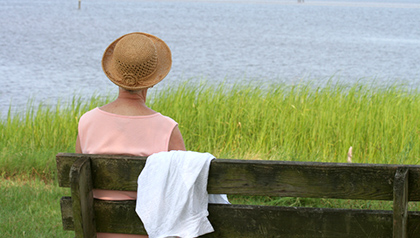AARP Hearing Center

Ruth Glispie’s day is consumed with caring for her husband, whose legs have limited mobility after two strokes. She can’t remember the last time she read a book or went to lunch with a friend.
Although her adult children sometimes lend a hand, and an aide comes daily to help out, the Chicago resident doesn’t have anything close to the kind of companionship she shared with her husband before his strokes.
“It’s very lonely,” said Glispie, 82. She doesn’t begrudge those hours of caregiving, but “I think sometimes, ‘Well, who comforts me?’ ”
Glispie and others in her situation may be able to find that comfort through an AARP Foundation program being tested in Chicago, Connecting Caregivers to Community (CC2C). Caregivers are paired with trained “buddies,” who can lend an ear and provide a link to community resources for caregivers.
The program is designed to alleviate isolation that caregivers over age 50 may experience from the challenges of caring for a frail or ill loved one.
Because many people turn to their faith for guidance during stressful times, CC2C is pairing with Trinity United Church of Christ, where Glispie is a member.
Launched in September, CC2C recruited volunteers among the congregation who are willing to be a buddy to someone who provides at-home care to a family member.
Buddies can give spiritual support, offer suggestions about caregiver resources and encourage caregivers to rest, exercise and accept help. Sometimes what the caregiver needs is just a sympathetic sounding board.
“I think the challenge of a lot of caregivers is giving yourself permission to ask for help,” said the Rev. Stacey Edwards-Dunn, 42, executive minister at Trinity United and the coordinator of CC2C in Chicago.
During the autumn, buddies attended training sessions to learn about the physical and emotional challenges faced by caregivers.
They also learned about resources such as home-delivered meals, adult day care centers, and places to learn more about the legal and financial issues caregivers face, especially for those with low incomes, said Laurinda Dodgen, associate state director for advocacy and outreach for AARP Illinois.
Buddies are people “the caregivers can reach out to,” Dodgen said.
“Sometimes they just need to talk. Or they might want local resources, and the buddy will assist them in navigating those things,” she said. Buddies are “really just there for a listening ear and to provide prayer if needed. Sometimes, people just need someone to listen.”
Some limitations
But there are limits to the help the caregiver buddies can provide.
For instance, a caregiver buddy can’t be left alone with a loved one, accept gifts or money, drive the caregiver or their loved one, dispense medications, or pick up prescribed or over-the-counter medications from a pharmacy.
There’s no long-term commitment; buddies can end their participation or change caregiver partners at any time.
Glispie and the other caregivers whom CC2C aims to help are among roughly 66 million unpaid family caregivers nationwide, according to AARP and the National Alliance for Caregiving.
In 2009, the economic value of the care that 12.9 million Illinois residents provided for ailing family members was more than $18.8 billion, according to an AARP Public Policy Institute report.
CC2C also is being pilot-tested in Raleigh, N.C.; Washington, D.C.; and Humble, Texas.
People taking care of a loved one can find tips, articles, tools and the opportunity to connect with experts at AARP’s Caregiving Resource Center.
Kelly Soderlund is a writer living in Bartlett, Ill.































































